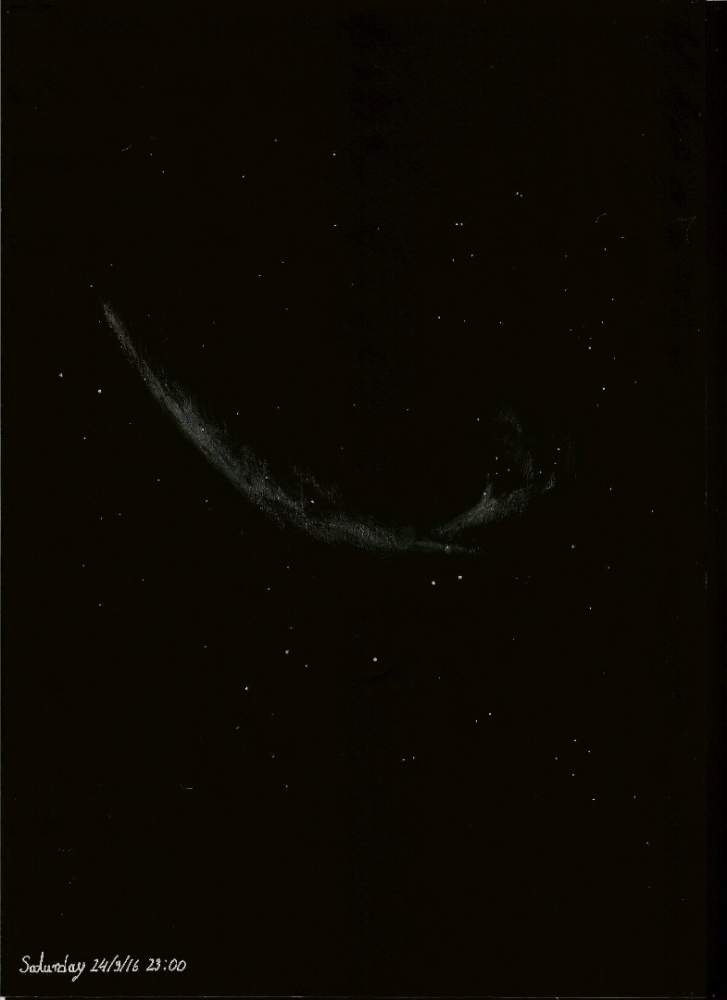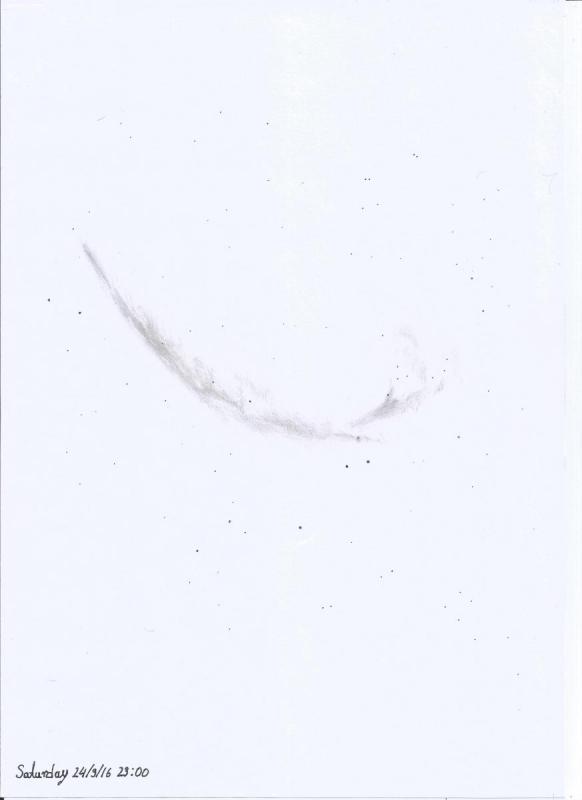- Posts: 137
- Thank you received: 299
Eastern Veil Nebula (NGC6992/5)
- mariosi
- Topic Author
- Offline
- Main Sequence
-

Less
More
8 years 1 week ago #106219
by mariosi
Eastern Veil Nebula (NGC6992/5) was created by mariosi
Eastern Veil Nebula (NGC 6992/5)
Right ascension 20h 45m 38.0s
Declination +30° 42′ 30″
Distance 1470 ly
Apparent magnitude (V) 7.0
Apparent dimensions (V) 3 degrees (diameter)
Constellation Cygnus
Physical characteristics
Radius 50 ly
Designations NGC 6960,6992,6995,6974, and 6979, IC 1340, Cygnus Loop, Cirrus Nebula, Filamentary Nebula, Witch's Broom Nebula (NGC 6960),Caldwell 33/34
The Veil Nebula is a cloud of heated and ionized gas and dust in the constellation Cygnus. It constitutes the visible portions of the Cygnus Loop (radio source W78, or Sharpless 103), a large but relatively faint supernova remnant. The source supernova exploded circa 3,000 BC to 6,000 BC, and the remnants have since expanded to cover an area roughly 3 degrees in diameter (about 6 times the diameter, or 36 times the area, of the full moon). The distance to the nebula is not precisely known, but Far Ultraviolet Spectroscopic Explorer (FUSE) data supports a distance of about 1,470 light-years.
The nebula was discovered on 1784 September 5 by William Herschel (Wikipedia).
Scope: 250mm S/W F.L.1200/f4.7
Eyepiece: T/S 2" 30mm plossl F.O.V.70°
Filter of type: OIII
Location: Mammari
Kind Regards
Marios
Right ascension 20h 45m 38.0s
Declination +30° 42′ 30″
Distance 1470 ly
Apparent magnitude (V) 7.0
Apparent dimensions (V) 3 degrees (diameter)
Constellation Cygnus
Physical characteristics
Radius 50 ly
Designations NGC 6960,6992,6995,6974, and 6979, IC 1340, Cygnus Loop, Cirrus Nebula, Filamentary Nebula, Witch's Broom Nebula (NGC 6960),Caldwell 33/34
The Veil Nebula is a cloud of heated and ionized gas and dust in the constellation Cygnus. It constitutes the visible portions of the Cygnus Loop (radio source W78, or Sharpless 103), a large but relatively faint supernova remnant. The source supernova exploded circa 3,000 BC to 6,000 BC, and the remnants have since expanded to cover an area roughly 3 degrees in diameter (about 6 times the diameter, or 36 times the area, of the full moon). The distance to the nebula is not precisely known, but Far Ultraviolet Spectroscopic Explorer (FUSE) data supports a distance of about 1,470 light-years.
The nebula was discovered on 1784 September 5 by William Herschel (Wikipedia).
Scope: 250mm S/W F.L.1200/f4.7
Eyepiece: T/S 2" 30mm plossl F.O.V.70°
Filter of type: OIII
Location: Mammari
Kind Regards
Marios
The following user(s) said Thank You: michael_murphy, lunartic_old, Mike
Please Log in or Create an account to join the conversation.
Time to create page: 0.100 seconds





